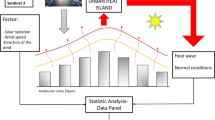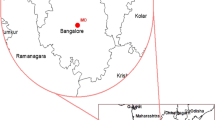Abstract
This study is the first work in implementing four-dimensional (4-D) hologram interferometry to simulate COVID-19 rate variations in slums using microwave remote sensing technology. The study also proposed a new mathematical formula to simulate the rate of COVID-19 from 4-D hologram interferometry; termed as Marghany’s 4-D hologram SAR interferometry. The most critical challenge of the world is pandemic COVID-19; which is spreading widely across slums. Slums are considered the main source of criminals and diseases owing to lack of perfect housing, unsanitary conditions, poor infrastructures and occupancy security. The meagre in the impenetrable urban slums are the furthermost susceptible to impurity because of (i) scarce and delimited admission to wellbeing drinking water and satisfactory extents of water for individual sanitation; (ii) the absence of elimination and handling of an excretory product; and (iii) the lack of removal of solid waste. In this view, urban slum requires the standard and accurate method to be identified automatically from remote sensing data. In this context, a remote sensing technique plays a tremendous role in monitoring land use spatial variations. The data are used that involved historical three Sentinel-1A data. The consequences present that the hologram Interferometric technique is being an admirable device for a disordered urban slum in place of it can differentiate between them from its adjacent setting. Reconstruction of a 4-D urban slum is delivered by hologram Interferometric phase unwrapping based on Particle Swarm Optimization (PSO), besides historical time variations of COVID-19 are allied with slum. Hologram interferometric reveals a countless imbrication of COVID percentage rate of 1.2% between high-class zone with the urban slum. The consequences disclose that urban slums, road networks, and infrastructures are effortlessly categorized. In conclusion, the hologram Interferometric based on Particle Swarm Optimization (PSO) is an appropriate algorithm for chaotic 4-D urban slum automatic detection in Sentinel-1A.
Access this chapter
Tax calculation will be finalised at checkout
Purchases are for personal use only
Similar content being viewed by others
References
Abdul-Rahman H, Gdeisat M, Burton D, Lalor M (2005) Fast three-dimensional phase-unwrapping algorithm based on sorting by reliability following a non-continuous path. In: Optical measurement systems for industrial inspection IV, vol 5856. International Society for Optics and Photonics, pp 32–40. 2005 Jun 13
Amarsaikhan D, Blotevogel HH, Van Genderen JL, Ganzorig M, Gantuya R, Nergui B (2010 Mar 1) Fusing high-resolution SAR and optical imagery for improved urban land cover study and classification. Int J Image Data Fusion 1(1):83–97
Anand K, Shah B, Yadav K, Singh R, Mathur P, Paul E, Kapoor SK (2007 May 1) Are the urban poor vulnerable to non-communicable diseases? a survey of risk factors for non-communicable diseases in urban slums of faridabad. Natl Med J India 20(3):115
Buckley RM (2020 Jun) Targeting the world’s slums as fat tails in the distribution of COVID-19 cases. J Urban Health: Bull N Y Acad Med 2:1
Corburn J, Vlahov D, Mberu B, Riley L, Caiaffa WT, Rashid SF, Ko A, Patel S, Jukur S, Martínez-Herrera E, Jayasinghe S (2020 Apr) Slum health: arresting COVID-19 and improving well-being in urban informal settlements. J Urban Health 24:1
d’Ozouville N, Deffontaines B, Benveniste J, Wegmüller U, Violette S, De Marsily G (2008) DEM generation using ASAR (ENVISAT) for addressing the lack of freshwater ecosystems management, Santa Cruz Island. Galapagos Remote Sens Environ 112(11):4131–4147
Dekker RJ (2006) Monitoring urban development using envisat ASAR. EARSeL, Munster
Eberhart R, Kennedy J (1995) Particle swarm optimization. In: Proceedings of the IEEE international conference on neural networks, vol 4, pp 1942–1948. 27 Nov 1995
El Meseery M, El Din MF, Mashali S, Fayek M, Darwish N (2009) Sketch recognition using particle swarm algorithms. In: 2009 16th IEEE international conference on image processing (ICIP). IEEE, pp 2017–2020. 7 Nov 2009
Ezeh A, Oyebode O, Satterthwaite D, Chen YF, Ndugwa R, Sartori J, Mberu B, Melendez-Torres GJ, Haregu T, Watson SI, Caiaffa W (2017) The history, geography, and sociology of slums and the health problems of people who live in slums. Lancet 389(10068):547–558
Friesen J, Pelz PF (2020) COVID-19 and slums: a pandemic highlights gaps in knowledge about urban poverty. JMIR Public Health Surveill 6(3):e19578
Holah N, Baghdadi N, Zribi M, Bruand A, King C (2005 ) Potential of ASAR/ENVISAT for the characterization of soil surface parameters over bare agricultural fields. Remote Sens Environ 96(1):78–86
Huang Y, van Genderen JL, van Veen BS (1997) The ITC filter: a new adaptive filter for SAR speckle reduction. In: Proceedings of the second international airborne remote sensing conference and exhibition
Hudaib AA, Hwaitat AK (2017) Movement particle swarm optimization algorithm. Mod Appl Sci 12(1):1–17
Ismail AM, Bakr H, Anas S (2013) A hybrid GIS space syntax methodology for prioritizing slums using coexistent urbanism. Coordinates IX, 44–50
Kangmennaang J, Bisung E, Elliott SJ (2020 Jan) ‘We are drinking diseases’: perception of water insecurity and emotional distress in urban slums in Accra, ghana. Int J Environ Res Public Health 17(3):890
Kohli D, Sliuzas R, Kerle N, Stein A (2012 Mar 1) An ontology of slums for image-based classification. Comput Environ Urban Syst 36(2):154–163
Kuffer M, Pfeffer K, Sliuzas R (2016 Jun) Slums from space—15 years of slum mapping using remote sensing. Remote Sens 8(6):455
Lilford RJ, Oyebode O, Satterthwaite D, Melendez-Torres GJ, Chen YF, Mberu B, Watson SI, Sartori J, Ndugwa R, Caiaffa W, Haregu T (2017) Improving the health and welfare of people who live in slums. Lancet 389(10068):559–570
Marghany M (2014) Fuzzy B-spline optimization for urban slum three-dimensional reconstruction using ENVISAT satellite data. In: IOP conference series: earth and environmental science, vol 20, no 1, p. 012036. IOP Publishing
Marghany M (2018) Advanced remote sensing technology for tsunami modelling and forecasting. CRC Press. 4 Jul 2018
Marghany M (2018) Four-dimensional water detection in mars using spline algorithm. Int J Hydro 2(5):607–611
Marghany M (2019) Four-dimensional of copper mineralization using tandem-X satellite data. Geosci Bull 1(1). 31 May 2019.
Marghany M (2019) Tandem-X satellite data application to four-dimensional of copper mineralization. Int Rob Auto J 5(2):38–41. https://doi.org/10.15406/iratj.2019.05.00170
Marghany M, Mansor S (2017) Three-dimensional Nepal earthquake displacement using hybrid genetic algorithm phase unwrapping from Sentinel-1A satellite. Earthq: Tecton, Hazard Risk Mitig, 139. 1 Feb 2017
Peer ES, van den Bergh F, Engelbrecht AP (2003) Using neighbourhoods with the guaranteed convergence PSO. In: Proceedings of the 2003 IEEE swarm intelligence symposium. SIS'03 (Cat. No. 03EX706). IEEE, pp 235–242. 26 Apr 2003
Ross AG, Rahman M, Alam M, Zaman K, Qadri F (2020 Mar) Can we ‘WaSH’infectious diseases out of slums? Int J Infect Dis 1(92):130–132
Song L, Chang Y, Xi J, Guo Q, Zhu X, Li X (2015 Nov) Phase unwrapping method based on multiple fringe patterns without use of equivalent wavelengths. Opt Commun 15(355):213–224
Zribi M, Baghdadi N, Holah N, Fafin O (2005 Jun 30) New methodology for soil surface moisture estimation and its application to ENVISAT-ASAR multi-incidence data inversion. Remote Sens Environ 96(3–4):485–496
Author information
Authors and Affiliations
Corresponding author
Editor information
Editors and Affiliations
Rights and permissions
Copyright information
© 2021 Springer Nature Switzerland AG
About this chapter
Cite this chapter
Marghany, M. (2021). Four-Dimensional Covid-19 Simulation in Slums Using Hologram Interferometry of Sentinel-1A—Satellite. In: Sharma, P. (eds) Geospatial Technology and Smart Cities. The Urban Book Series. Springer, Cham. https://doi.org/10.1007/978-3-030-71945-6_10
Download citation
DOI: https://doi.org/10.1007/978-3-030-71945-6_10
Published:
Publisher Name: Springer, Cham
Print ISBN: 978-3-030-71944-9
Online ISBN: 978-3-030-71945-6
eBook Packages: HistoryHistory (R0)




